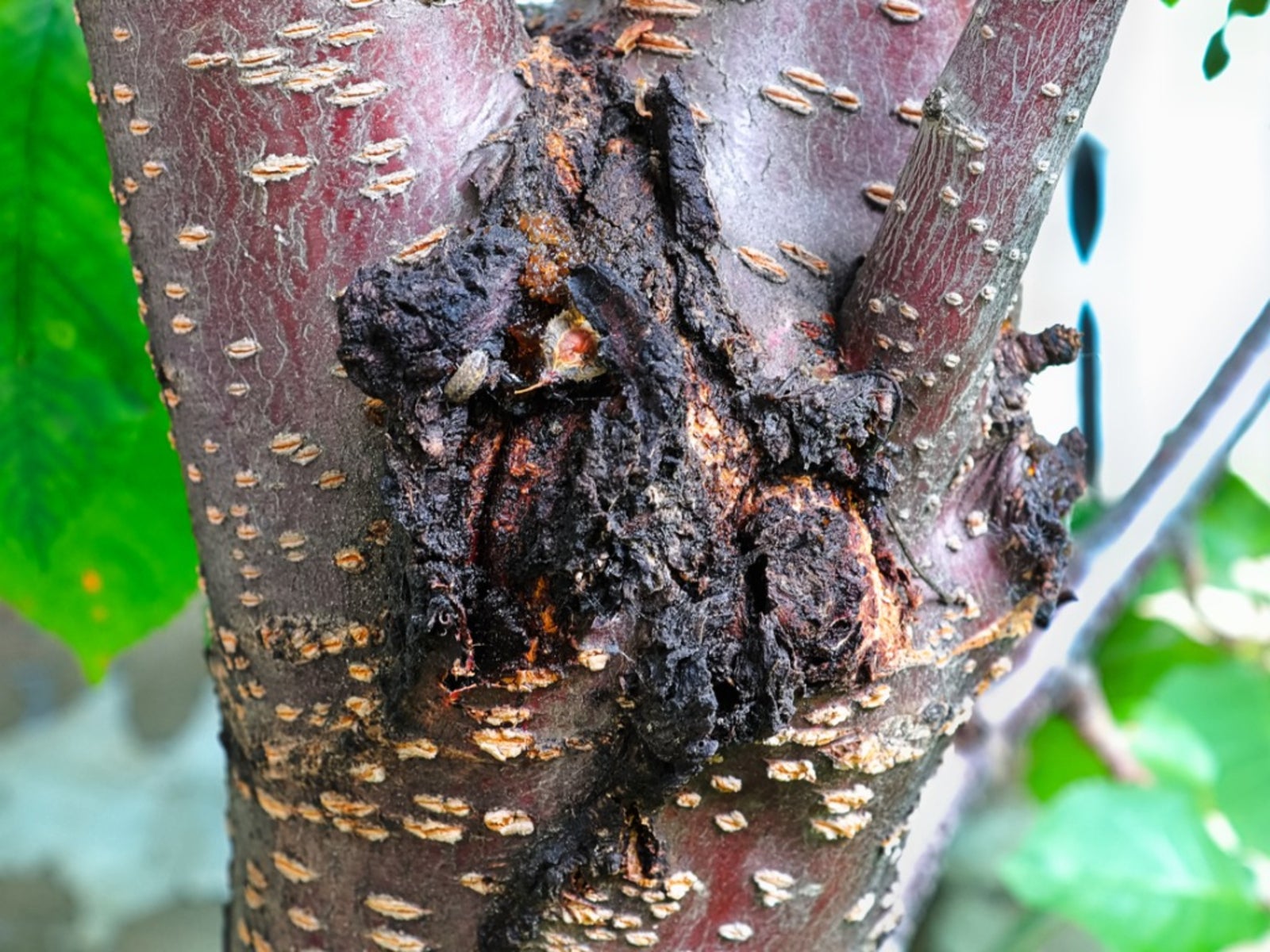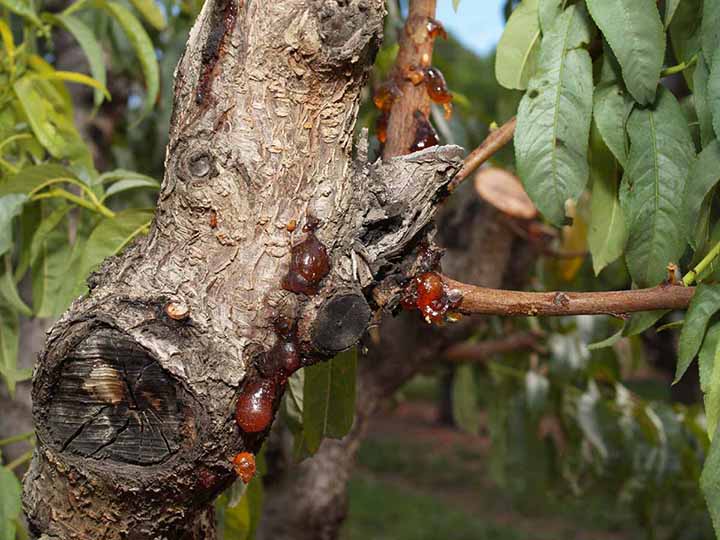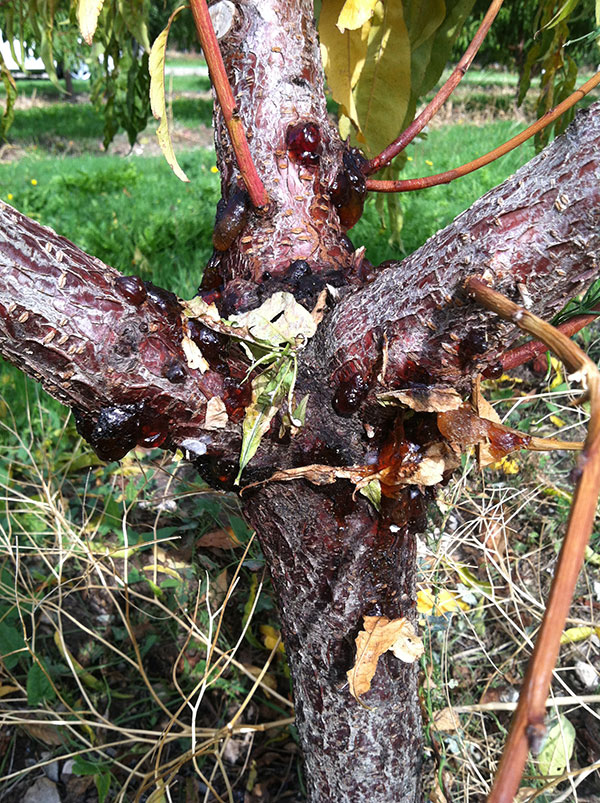
Perennial Canker
Cytospora Cancro
Pathogen:
Fungus
Type:
Risk:
HIGH




DESCRIPCIÓN
Descripción del patógeno
The pathogen Cytospora canker is a fungus belonging to the genus Cytospora, known to cause significant damage to various species of fruit and ornamental trees. This fungus is particularly destructive during wetter seasons and is dormant in drier conditions, allowing it to persist in the environment. Cytospora canker reproduces through asexual spores called conidia, which are dispersed by wind, rain, and contaminated tools. Spores germinate on the surface of plants and penetrate through wounds or cuts in the bark. Once inside the plant tissue, the fungus colonizes the phloem and cambium, destroying cells and causing canker formation. These cankers act as reservoirs for new spores, perpetuating the infection under favorable conditions. In advanced stages, the fungus can invade wood and cause significant decay, affecting the health and productivity of infected trees.
Descripción de la enfermedad
Perennial canker caused by Cytospora canker on apricot is a devastating disease that affects both the bark and internal tissues of the tree. The initial infection usually begins on the branches and trunk, where small lesions form and gradually expand. The disease is characterized by the appearance of gummy exudates oozing from infected areas, often accompanied by dark discoloration and sinking of the cortex. Over time, cankers can encircle the branches or trunk, cutting off sap flow and causing dieback of the upper tissues.
- Small lesions in the cortex that gradually expand
- Gummy exudates oozing from infected areas
- Dark discoloration and sinking of the bark
- Formation of cankers that surround branches or trunk
- Regressive death of affected branches
- Reduction in fruit production
- General weakening of the tree and increased susceptibility to other infections

TEMPERATURA Y HUMEDAD
15-25°C
75-95%

VÍAS DE TRANSMISIÓN
Wind, Rain, Contaminated tools, Pruning remains, Contact between plants, Water splashes

Tratamientos químicos
CONTROL
• COPPER OXYCHLORIDE 52% (EXPR. IN CU) [SC] P/V
• COPPER OXYCHLORIDE 30% (EXPR. IN CU) [WP] P/P
Tratamientos autorizados en agricultura ecológica
• COPPER OXYCHLORIDE 52% (EXPR. IN CU) [SC] P/V
• COPPER OXYCHLORIDE 30% (EXPR. IN CU) [WP] P/P
Biological control
-
Preventive treatments
• COPPER OXYCHLORIDE 52% (EXPR. IN CU) [SC] P/V
• COPPER OXYCHLORIDE 30% (EXPR. IN CU) [WP] P/P
- Use varieties resistant to the pathogen whenever possible.
- Implement proper pruning practices to remove dead or infected branches and promote a strong tree structure.
- Disinfect all pruning and cutting tools with appropriate solutions to prevent the spread of spores.
- Avoid making cuts or wounds on the bark during wet seasons when the risk of infection is greater.
- Apply preventive treatments with specific fungicides during times of highest risk of infection.
- Improve soil drainage and prevent waterlogging around the roots of the tree.
- Maintain good nutrition of the tree through balanced fertilization to strengthen its natural resistance to diseases.
- Remove and destroy pruning remains and severely infected trees to reduce the source of spores in the environment.
- Promote adequate ventilation between trees by planting them at an appropriate distance to minimize humidity and promote air circulation.
- Carry out periodic inspections of the orchard for early detection of symptoms and take corrective measures immediately.
Recomendaciones
*Los tratamientos recomendados no dejan de ser recomendaciones según las bases de datos de las autoridades y en ningún momento sustituyen las directrices marcadas según la legislación de cada país





